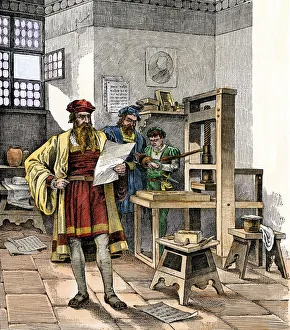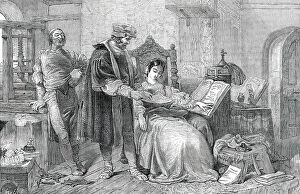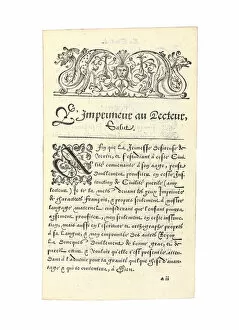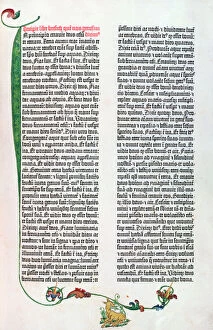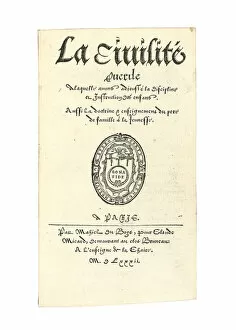Moveable Type Collection
"Revolutionizing the Written Word: The Birth in the 1450s" In the 1450s, Johannes Gutenberg's groundbreaking invention, moveable type
All Professionally Made to Order for Quick Shipping
"Revolutionizing the Written Word: The Birth in the 1450s" In the 1450s, Johannes Gutenberg's groundbreaking invention, moveable type, forever transformed the world of printing. With his invention of the printing press, Gutenberg revolutionized communication and made books accessible to a wider audience. One remarkable example is the Gutenberg Bible page, a masterpiece that showcases both exquisite craftsmanship and meticulous attention to detail. Printed in Mainz around 1450-55, this iconic piece represents a pivotal moment in history when knowledge became more readily available. Another notable work produced using moveable type is "La civilite puerile a laquelle avons adiouste la discipline et instruction. " This enlightening book not only provided education but also emphasized proper behavior and etiquette for young readers. The process behind creating these literary treasures was awe-inspiring. One can imagine witnessing the production of the Gutenberg Bible as each page was meticulously printed by hand. It was an arduous task that required immense skill and dedication from craftsmen who meticulously arranged individual metal letters into words and sentences. Moveable type quickly spread beyond Germany's borders with William Caxton becoming England's first printer. His contributions were instrumental in bringing literature to English-speaking audiences for centuries to come. Gutenberg's press also played a significant role in disseminating knowledge through Latin grammar pages. These texts helped shape educational systems across Europe during this transformative era. Even today, we can appreciate moveable type's enduring impact on society. From vintage printers' blocks used for publications like National Press Club Yearbook to modern-day printing presses producing countless materials daily – all owe their existence to Gutenberg’s ingenuity. As we reflect on these historical artifacts such as PPRT2A-00006 or PPRT2A-00002 or Printing Press C017 / 3468 - tangible reminders of our past - let us celebrate how moveable type has shaped the way we communicate, learn, and preserve knowledge.

